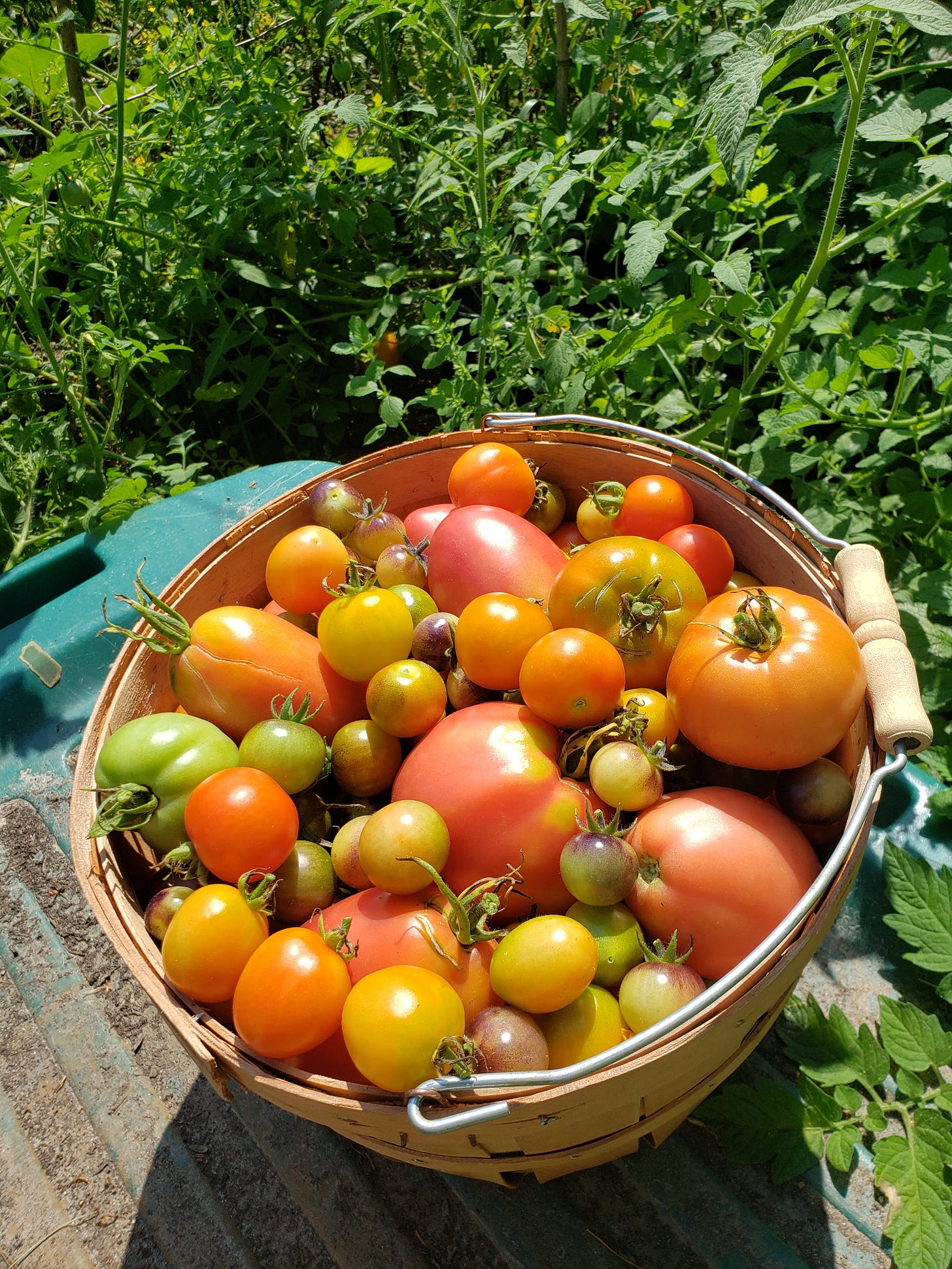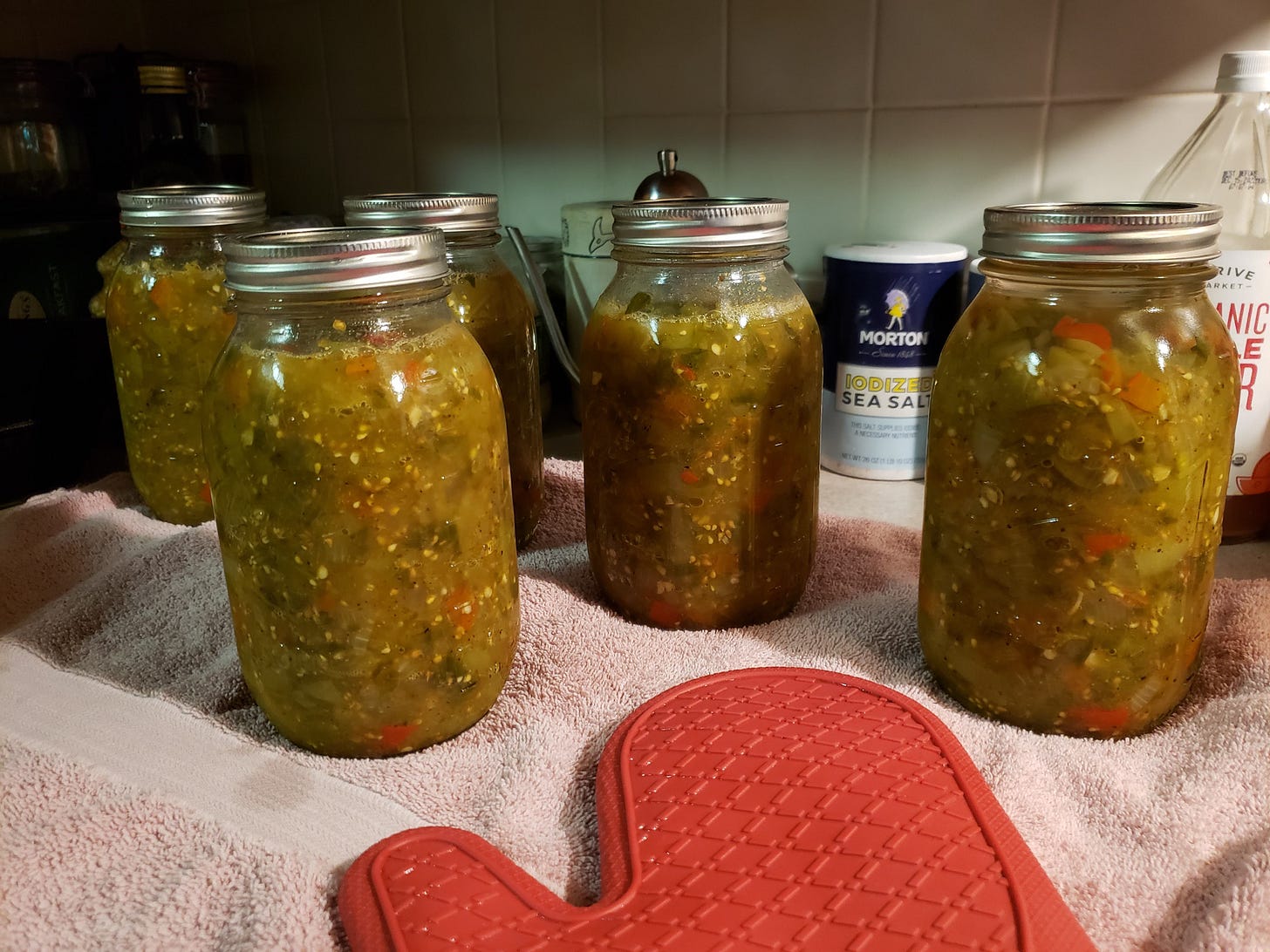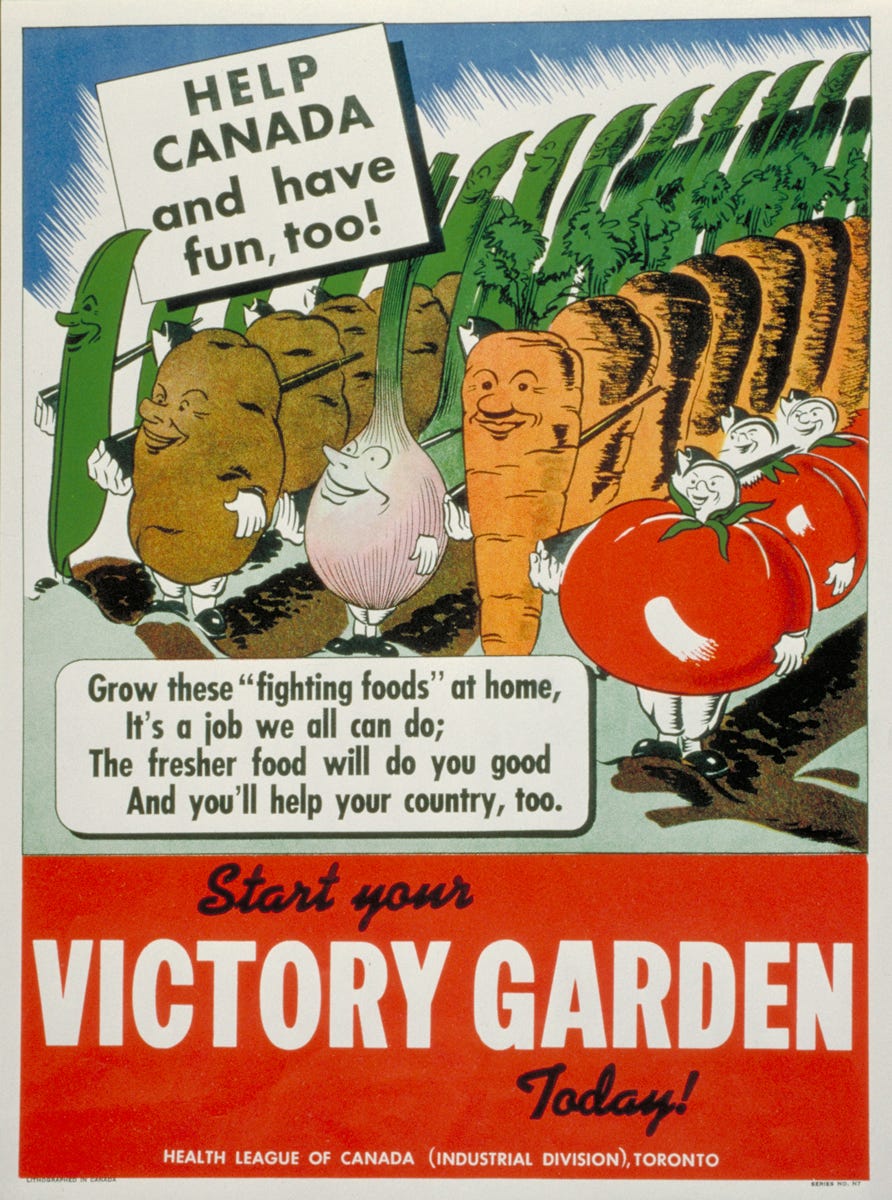The Queen and I have Covid…
…thankfully mild in both cases. She is apparently continuing on with light duties (reading state papers), while I have been binging British documentaries. The latest being The Wartime Farm, which I highly recommend to any other history nerds. The premise is the same as the others in the series (The Tudor Monastery, Victorian, & Edwardian Farm): a trio of archaeologists & historians live on a historic working farm for a year, using only tools and resources of the period. The series are available for streaming on Amazon Prime, Acorn TV, and partially available on YouTube.
Dig for Victory
Some things I learned from this latest documentary series: pre-WWII, 2/3 of Britain’s food was imported and most of their farmland was used for raising livestock. The targeting of import ships by German U-boats and the need as an island nation to avoid being starved into surrender led their government to essentially change British farming. Large numbers of livestock were culled, pastureland (and eventually every spare roadside patch) was ploughed for growing grains and flax, and mechanical milking of cows went mainstream. Foraging was encouraged, both for native fruits to supply Vitamin C and for herbs to sell to the pharmaceutical manufacturers.
You could keep a pig in cooperation with your neighbors (“Pig Clubs”), but only if you could feed it on scraps, and at slaughter time half the pork had to go to the government for ration supplies. Apparently American canning techniques were implemented in Britain during the war, with community canning classes taking place across the countryside. These groups of women sent their newly canned fruits directly into the rationing system. It was interesting to me that none of the historical re-enactors in the 2012 series had done any canning prior to the show. Maybe that’s changed by now; after all, 2020 brought a resurgence in canning here in the U.S.
By the time V-E Day arrived, the soil was suffering from lack of crop rotation and lack of manure to fertilize (because of the previous culling of the farm animals). But by 1942 there were millions of victory gardens providing food for just about every person in the nation. Those in the country had better access to food, since they could supplement with foraging, tend larger garden plots, and keep extra milk if they owned dairy cows. As the cities continued to be bombed, there were largescale volunteer efforts by those in the countryside to not only host evacuees but to bring food into urban areas for distribution. There’s probably some lessons in there for us, on disaster preparedness, national self-sufficiency, community food supply, self-sacrifice and austerity, consideration of agricultural ecosystems, resource stewardship… things like that.
Fascinating stuff, which led me down an internet rabbit hole and into wartime Victory Gardens. Britain, Canada, Australia, the U.S. and yes, Germany, all had national wartime gardening initiatives. Britain’s at least persisted into the 1950’s, as rationing of meat, sugar, milk, and butter continued; there was no per-person limit on vegetables.
I love that the whole citizenry were encouraged to grow food where they lived and worked, whether in urban parks, schoolyards, village greens, factory courtyards, or suburban gardens, as well as the White House and Buckingham Palace (where the royal family grew onions). And I love the resurgence of interest in small-scale food-growing today. I hope it becomes mainstream again to dig up your front yard for a vegetable patch…but for ecological & community reasons, not due to war or food shortages. We can be a nation of gardeners again! As they’ve shown in places like Detroit, turning empty lots into neighborhood gardens is an empowering way to combat food deserts.
20 Quarts per Person…
That’s the amount of canned tomatoes the USDA advised a household to put up per year during WWII. That’s equivalent to 5 gallons or 19 liters per person. I have a lot of catching up to do! Maybe I should go all out again on tomatoes after all.
Thanks for attending my history lesson, friends. If you too enjoy a good internet rabbit hole, these are some great starting places for this topic:
USDA Digital Exhibit on Victory Gardens
The video is jolly wholesome at that link. I’m slightly concerned about how cavalierly the kids in the family apply pesticides to their household garden crops, though. Yikes. Some things just don’t age well.
British Library, Dig for Victory Radio Ad
Quote from the radio bit regarding ration lines: “Surely, isn’t an hour in the garden better than an hour in the queue?” I’d say Yes to that any day. (But stop calling me Shirley.)

Thanks to all of you for your great response to the Groundhog Day post! It is unanimous amongst you that Punxsutawney Phil should actually look for his shadow, and that pawing a scroll instead is very silly indeed.
Have you tended a victory garden (either back in the day for the more mature readers or during the pandemic)? What will you be planting this year to offset food shortages in your area, supplement your household groceries, or share with neighbors? Do you have suggestions for other farming or food documentaries to watch? I’m all ears! (Too early for corn jokes? Sorry.) Leave a comment on the post or reply to this e-mail. I’d love to hear from you!
— Erin, in Michigan












Great post! I recently was watching a video that said that 70% of the plants in the world's food diversity has been lost in the last 100 years. To me, finding great heirlooms and trading with others is my victory garden. Thanks Erin.